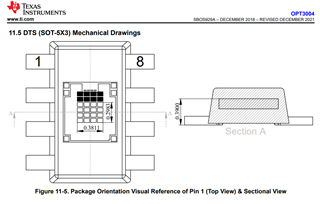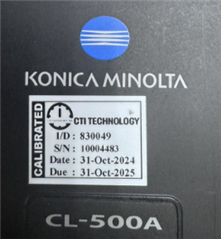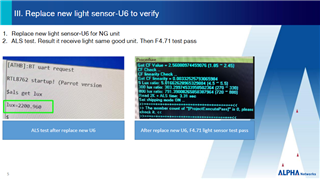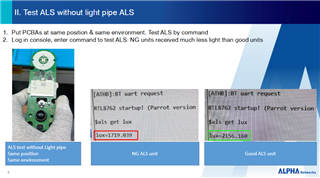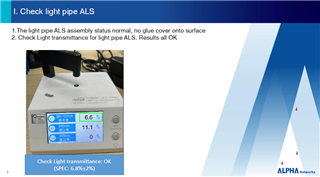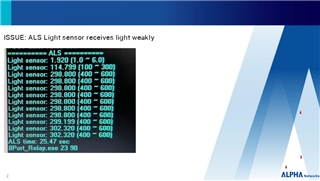Tool/software:
Hi team,
My customer are currently experiencing an issue during product testing involving the OPT3004 Ambient Light Sensor.
In our analysis, one sensor returned a lux reading of 1719 lux under an applied illumination of approximately 2298 lux.
Based on this result, our internal engineer concluded that the sensor is NG, since it falls outside the expected output range under such lighting.
However, according to the OPT3004 datasheet, the Electrical Characteristics table specifies accuracy only under the condition of 2000 lux white LED illumination,
where the acceptable output range is 1600–2400 lux
We would like to confirm with TI:
- Is it valid to apply a 2298 lux input and expect a proportionally scaled lux output using interpolation?
- Does TI define an official accuracy range or test methodology for lux inputs outside the 2000 lux condition (e.g., 2298 lux)?
- If the sensor reads 1719 lux at 2298 lux input, is that considered out-of-spec?
Thanks


